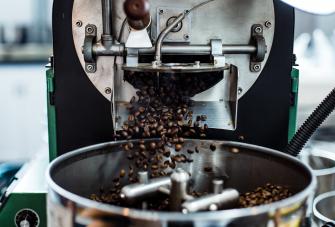What is Proper Restaurant Etiquette for Servers?
When you work as a server, it’s vital that you learn the etiquette that fits your restaurant. You, as a server, reflect the restaurant in all your actions, no matter how small. It’s also one of the main server responsibilities to make sure all your guests have the best possible time at your establishment. In some restaurants, this can mean following the proper etiquette.
While the expected etiquette will vary from restaurant to restaurant, here are some examples of proper server etiquette that will serve you well on any occasion.
Preparing for service
Before service begins, you need to make sure you have everything you need for every situation, and that your dining area is at its best. This is not only good etiquette but good business sense. A study conducted by P&G Professional found that nine out of ten customers value cleanliness as an important factor in deciding whether to be a repeat customer [1]. So, make your dining area as presentable as possible to give your customers the best possible experience.
Tables
Tables should be disinfected, wiped down, inspected for wobbly legs, and arranged according to the restaurant floor plan. Tables should also be reserved according to bookings. You can usually reference bookings by using the bookings app in your point of sale (POS) system.
Tableware
Tableware is everything that goes on the table, including tablecloths, plates, glasses, cutlery, and decorations. You need to inspect all these things for defects like chips, scrapes, scuffs, and holes. Glasses and cutlery should be polished, even small imperfections like fingerprints on the glassware are best removed.
Stations
You will have a station where you will keep extra tableware, menus, condiments, napkins, and more. Make sure these stations are well stocked before your service starts. Doing so will help you avoid embarrassing shortages during the service.
Floors
Before the service begins, you want to make sure that the floors of your dining area are completely free of dust, dirt, crumbs, and other bits of food. Use the appropriate cleaning devices, whether that be a broom, mop, or vacuum cleaner. Check for any trip or slip hazards on the floor too, like a lifted carpet or a spillage.
Ambience
A restaurant’s ambience can be incredibly important to the customer’s dining experience. Ensure the light levels are correct, that any music being played is at the appropriate volume, and that any aspects of the restaurant’s decor are adjusted and cleaned.
Grooming and presentation
As a representative of the restaurant, you need to look your best at all times. Here are some things to keep in mind when you’re on the job.
Good grooming
Make sure you’re well-groomed and follow good hygiene at all times. For women, it can mean tying back long hair or styling it appropriately. For men, this can mean having a sharp haircut and keeping any facial hair well maintained.
Sharp clothes
Most restaurants require that their employees wear a standard-issue uniform. Ensure all your work clothes are clean, free of holes or tears, properly fitted, and pressed. Follow your restaurant’s guidelines on any accessories you must wear or remove as part of your roll.
Good posture
No matter where you work, good posture is always a must-have in a server. Good posture shows the customer that you are attentive, respectful, and able to carry out their wishes [2].
Welcoming guests
When your guests arrive, they experience their first impression of the restaurant. This is the first step in a long and complex dining experience. You want to put your best foot forward.
Greeting from the hostess
The host or hostess will greet guests as they arrive and confirm their reservations if they have them. They may also be in charge of determining how many menus may be needed for a party and guiding the guests to their assigned table. Check out our blog on the duties of a hostess to find out how your host/hostess can make sure this vital part of your guests’ evening sets them up for a great meal.
Presenting the menu
Some restaurants keep their menus at the front door or at server stations. Others place their menus directly on the table, one for each guest. Others will have several menus already at the table that guests can choose from. If your hostess or server presents the menu to the guests, make sure you hand each menu off to each guest, ideally over their left shoulder.
Taking orders
The ordering process is the guests’ main interaction with the server. It’s very important that the server demonstrates proper etiquette for their context and ensures their guests get everything they need.
No touching
Many servers like to use physical touch as a way to build a rapport with their guests. In certain situations, this can be fine. However, as a general rule of thumb, it’s best to avoid any physical touching when taking an order. It demonstrates a certain respect for your guests’ personal space.
Know your menu
When taking orders, be sure you’ve memorized any nightly specials so you can describe them at will. During your shift, be sure to get regular updates from your kitchen staff on stock levels in case there are any shortages of ingredients. Be sure to speak clearly and describe each dish in detail. You may be asked certain questions about each dish about its ingredients and preparation. Be sure to ask about any dietary restrictions during this time.
Upselling
While not strictly a part of etiquette, upselling is a vital part of any server’s role. You want to make sure that your guests receive the best possible items from your menu in accordance with the context and your best judgment about what they might want.
Serving food
Once the orders have been taken and the food prepared, it’s time to bring the food to the table. You’ll want to make sure you follow the right steps during this process.
Serving direction
The direction from which you place each plate in front of your guests can matter a lot, depending on the type of restaurant you work in. As a general rule of thumb, you want to serve from one side consistently, serve with the arm on the side you are serving from. So, if you are serving from the right, use the right hand. If you are serving from the left, use the left hand.
Control the pace of the meal
Good timing is important so guests do not feel rushed between courses, nor that they have a lengthy wait. . You will need to read the table and use your judgment about when to engage the party and clear places for the next course.
Bring all items in a course at once
If your guests have ordered a meal with multiple items as part of the same course, for example, a main dish with two sides, it’s important to bring these items out at the same time. . Communicate with your kitchen to ensure all elements of the course come up to the pass at the right time.
Serving wine
Serving wine is essential to a great dining experience. Many restaurants require the server to bring the bottle to the table and serve it themselves.
Using a wine key
You will want to learn how to use a wine key. While it’s not difficult to learn how it’s essential that you learn how to do it without a hitch. Practice using one at home so you can use one at work without any issues.
Bring all items at once
If you’re serving wine, you’ll want to bring everything you’ll need in one trip, including the wine bottle, a glass for each guest, a wine bucket with ice for chilled wines, and your wine key.
Presenting the wine
Before opening the wine, it’s common practice to show the bottle to the customer. This is to ensure that the right selection has been made. Be sure to show the bottle to the person who ordered it. You may also want to state the name and the vintage.
Sampling
After opening the bottle, place the cork in front of the guest who ordered the bottle, with the wet side facing up. Pour a small sample for this guest into their glass. This is done so the guest in question can taste the wine to ensure it isn’t corked.
Pouring
Once the wine is approved, move clockwise around the table, pouring each glass. In most cases, it’s best to serve ladies first. You should always finish with the person who ordered the wine.
Clearing the table
Clearing the table is just as important as serving. A messy table is an unpleasant table, so you want to make sure you clear away those dishes as soon as you feel it’s appropriate.
Wait for everyone to finish
You should wait for every guest to finish eating before you start clearing away their dishes.
Replace cutlery
During a change in course, your guests may need extra or replacement cutlery. You can deliver this cutlery after their plates have been cleared.
Clear from the right
Always clear a guest’s plate from the right. Follow a clockwise order around the table. When clearing a plate, place the cutlery in a cross across the plate to reduce the chance of the cutlery falling off.
Don’t stack dishes
While stacking dishes when you’re clearing them away may seem like a time-saving move, it’s a big no-no in some restaurants. Take as many plates as you can safely and comfortably carry at a time.
De-crumb the table
During the meal, crumbs and other bits of food are bound to have been sprinkled across your guests’ table. If you have the option, de-crumb the table with a table crumber and wipe all the bits onto a small plate. This is usually performed between courses.
Improve server performance through your POS
Training new employees can be difficult. You need to balance their training needs with their shift work, and sometimes training can fall by the wayside.
Get your servers as knowledgeable and skilled as possible by managing your training program through Epos Now’s Restaurant POS.
- Track time-at-table and manage floor plans in real-time to boost table turnover
- Eliminate costly errors with automated ordering and seamless communication
- Track inventory, calculate costs and profit, simplify reordering and integrate with leading accounting software
- Leverage powerful sales reports on any device to boost profitability, reduce wastage and improve employee efficiency
- Group by course and order type to speed up preparation and reduce customer wait times
Contact Epos Now to learn more about our systems.




